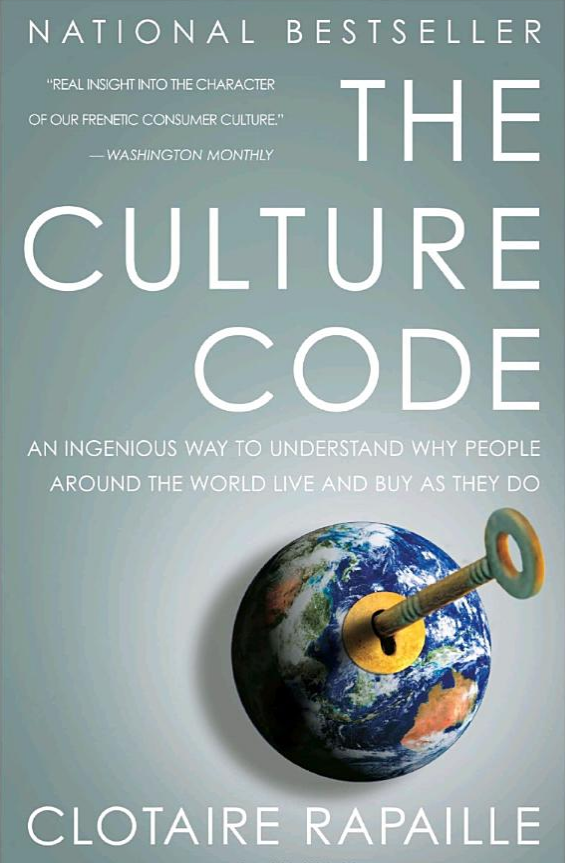After writing about using words to your advantage in life and business, I began thinking of one of my all-time favorite mental models. It comes from legendary marketing psychologist Clotaire Rapaille, who wrote about it in his treatise “The Culture Code“.
 Before we get into that, let me say that Dr. Clotaire Rapaille caught my attention so long ago, in part, because he advocates something I have said for years: When you are undertaking an action, stop to ask yourself, “Why am I doing this?” For me, that is the starting point of then making better, more informed decisions so you can arrange your life with purpose to maximize your own happiness and get the most utility out of your time and resources. It causes you to be mindful of your own actions so you’re not switching on autopilot. If you’re commuting two hours a day, for example, it might go something like this:
Before we get into that, let me say that Dr. Clotaire Rapaille caught my attention so long ago, in part, because he advocates something I have said for years: When you are undertaking an action, stop to ask yourself, “Why am I doing this?” For me, that is the starting point of then making better, more informed decisions so you can arrange your life with purpose to maximize your own happiness and get the most utility out of your time and resources. It causes you to be mindful of your own actions so you’re not switching on autopilot. If you’re commuting two hours a day, for example, it might go something like this:
- Why am I commuting? > To make money for my family
From here, you’d branch out into two different, other paths:
- Is this the most efficient way of achieving that once you’ve calculated in the cost and time involved?
- Why do I want to make money for my family? What, specifically, am I attempting to achieve and how much money would achieving it take, in specific dollars and cents?
You do this, keep answering each branch, and you avoid the fate of having worked a job you hate for 40 years only to have your children not know you, wasting your health and precious time in a terrible trade-off. It’s living life wide awake, making intentional decisions rather than just letting life happen to you. It also allows you to embrace certain things, even if they don’t make sense, because they make you happy.
Anyway, Rapaille’s body of work revolves around identifying the frame of reference that people use when they go on autopilot; that series of associations, emotions, and what Dr. Robert Cialdini called “click-whirl” responses that cause them to buy this particular laundry detergent or that specific bottle of brandy.
He talks about the evolutionary construct of the triune brain; that we have three systems of sorts – the cortex (intelligence, higher order), the limbic (emotional, complex), and the reptilian (the base, primal drive for comfort and security). He believes that most people make economic purchasing decisions based largely on that base, reptilian drive, not on higher order thinking.* By tapping into this base, primal part of the mind, a good product or service can unleash the buying urge. That is, you don’t convince people to buy your product or sign up for your service, you find the key that unlocks the barriers so they themselves desire it naturally because it speaks to them in some way that goes far beyond ordinary utility. (That seems to be precisely what is happening with the Flow Hive we talked about awhile ago. It sat out to raise $70,000 and with 10 days remaining, it’s now up to $9,016,430 in sales and donations.)
For Rapaille, the key is to discovering the culture code for a specific product, service, or experience in a specific community is to find the earliest recollections someone has of an object or process; the first time it imprinted on their brain, forming the connection and associations in the neural pathways of their brain. He then seeks to exploit this by making it the entire focal point around everything from product design to the market message.
Here is a look at his process from an old 60 Minutes clip.
Back when Folgers was a P&G subsidiary, he managed to revolutionize their coffee profits by identifying that the moment of imprint for most people when it came to coffee wasn’t when they first drank it. It had nothing to do with the taste. It was the scent. The fragrance. Waking up to it brewing in the morning as a child; the feeling of home; comfort; safety. The ads began to focus on the sound of percolation, parents and kids in pajamas, images of the carafe being filled with black coffee, the sound of the burst of air coming out of the tin when a can opener broke the seal, hitting you with that wave of fresh coffee bean aroma.
With the rise of the multi-national corporation, the culture code became even more important as executives had fundamental differences in life experience from their customers. Many countries have a culture code embedded in the very language itself. In some places, the sun is masculine, in others feminine. Small details like that matter and explain why certain things won’t take off in specific areas of the world. You have to tailor the message. (Knowing this, L’Oreal paid Rapaille to study seduction in eight different cultures; how a behavior can be a huge turn on in one country and a major turn off in another, which influences how everything from fine perfume to lipstick needs to be sold.)
Rapaille changed the car industry. The P.T. Cruiser, which is now the hand-me-down car of young drivers everywhere, happened because of his findings that people were tired of generic cars and wanted something they either loved or hated. They sold like crazy – more than 1,300,000 units – because he convinced the auto company to build according to the code, not what people said they wanted. The code? Gangster. And I can tell you absolutely that when they were first released, everyone in high school was talking about them and referring to them that way; a car that Al Capone would drive. A friend of mine even had her father buy her one and had to be put on a 6 to 12 month waiting list because the dealers couldn’t keep the inventory in stock. There was nothing like it on the market. Everything else was generic.
For me, I summarize the culture code mental model, which is tied very closely to the mere association mental model, this way:
- Everybody has pre-programmed in the back of their mind all sorts of associations and ideas tied to specific products and experiences.
- The culture in which one is brought up or resides influences this code.
- These programmings are not necessarily rational nor even something you’d remember but they influence how you feel about certain things, from buttermilk biscuits to wheelbarrows; fine china teacups with roses painted on them to letterman jackets.
- Tapping into the positive associations of this code, you can increase compliance with whatever it is you are trying to achieve.
- If you can harness this on a multi-generation basis, you can get some really incredible positive feedback loops (Hint: This is a reason after national tragedies, such as September 11th, 2001, you won’t find an advertisement for Coca-Cola hardly anywhere. They go silent. Management wants to be absent during times of such sadness so their brand is inextricably associated with the idea of “happiness”.)
Here is a speech Dr. Clotaire gave at the National Retail Federation’s 94th Annual Convention and Expo that will give you some insight into the method. You really should consider taking the time to watch it.
* A lot of behavioral economics seems to indicate this is true for nearly all financial decisions. If you doubt it, witness that those who defy the trend – like engineers – tend to end up with far more ultimate net worth for every dollar generated in income throughout life than the typical citizen because they focus on things like lifecycle cost and allow cold, calculated rationality to make their capital allocation choices.
Here is an extended interview …



